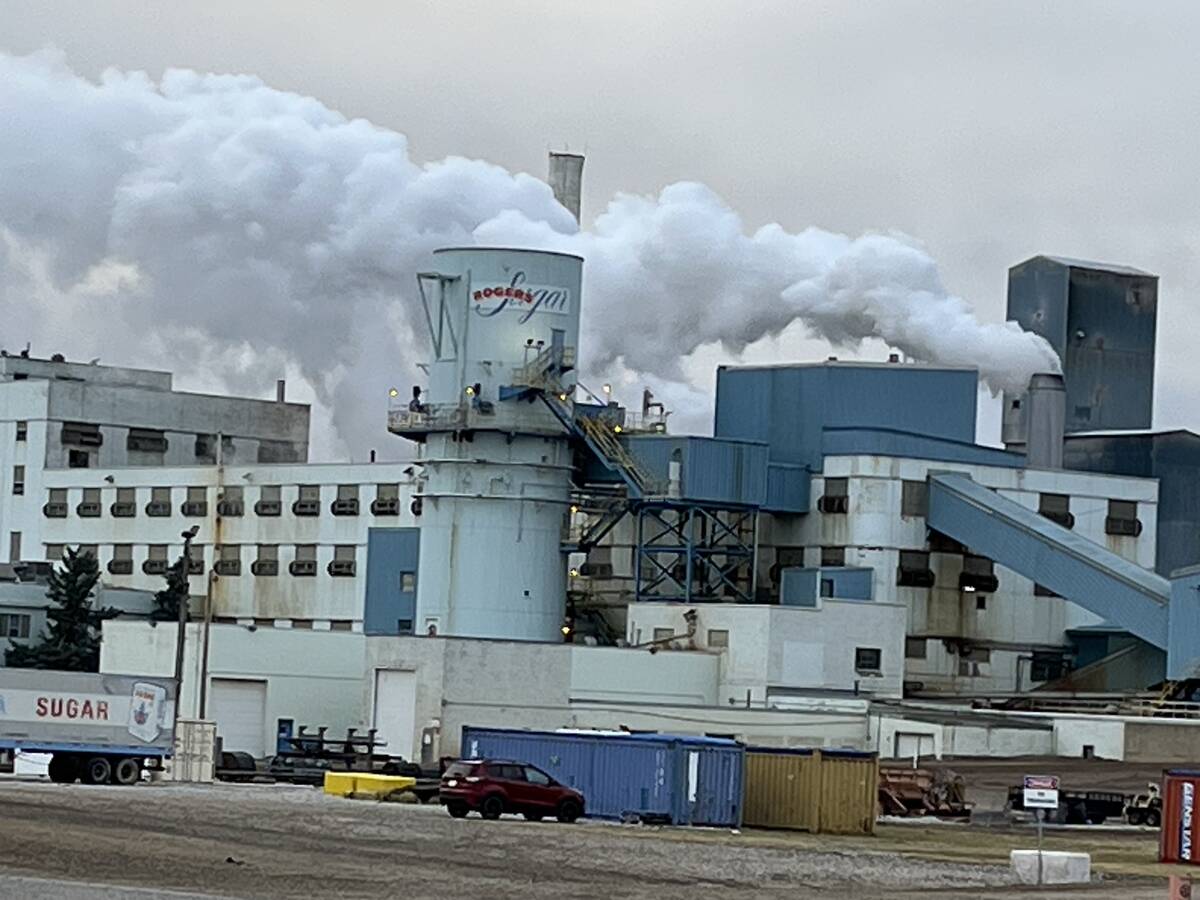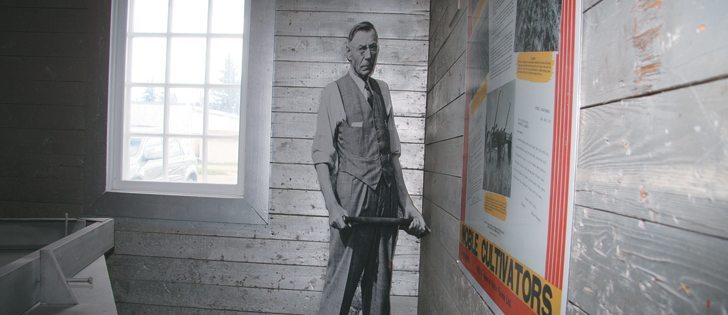Volunteers at the Nobleford, Alta., museum stumbled into a treasure trove when they undertook a project to honour the town’s founder, Charles Sherwood Noble, and his invention of the famed Noble blade.
While gathering archival material for the production of a film, they found boxes of photographs, negatives and 16 millimetre celluloid that had never been archived.
Some of it was used to produce A Noble Vision, a 15 minute film relating the settlement of the region and Noble’s role in farming and farm equipment invention. The film premiered in late August.
Read Also

Sugar beet harvest underway in southern Alberta
Alberta Sugar Beet Growers hosts field tour to educate the public on the intricacies of the crop, its harvest process, and contracts with Lantic Sugar
The rest of the materials will enrich the museum’s archives and historic catalogue in years to come.
“It was a little bit like Christmas,” said museum society president Julie Pike. “This has opened a lot of doors for us.”
A Noble Vision will be available for viewing at the museum and Pike said there are plans to present it at various venues.
To prepare for the film’s development, which was contracted to Shadow Light Productions out of Canmore, Alta., a core group of volunteers scoured through photos and negatives and interviewed anyone they could find who had memories of Noble’s original factory, built in 1941.
That factory site is now home to the museum and has provincial designation as a historic building.
The old 16 millimetre films gave volunteers a few moments pause until society members realized they had an old projector in their collection of exhibits.
The projector was set up in the men’s washroom, where Pike and one of the film’s producers spent many hours over the past year.
“We have an exceptionally good volunteer base who spent many, many hours going through the negatives and the pictures and getting that projector up and running,” said Pike.
“It was stuff we didn’t even know we had.”
Those volunteers, including Peggy Campbell, took boxes of photos and negatives home for sorting when time permitted.
Campbell remembers a time when Noble visited her father’s farm and was impressed with his style, even on field visits.
“He was always in a suit and well dressed,” she said.
A life-sized cardboard cutout of Noble watches over an array of Noble blades, from the flat style to the V-shaped, which are inside the museum. A Dictaphone, said to have recordings of his voice, are among the museum’s holdings, but it doesn’t have the needed technology to hear them. Nevertheless, A Noble Vision includes the recorded memories of several people who worked in the factory and knew the famous inventor and farmer.
Pike said she is pleased with the final result and with the increased profile it will give the museum, which at one time had lost its status within the museums association.
“We worked very hard to gain our status back and so this is part of us staying engaged and growing as a museum … by telling a story.
“Museums are storytellers and that’s what we were trying to do. We needed to tell the story of the factory.”
Noble, who was nicknamed “The Chief,” was born in Iowa and settled near Claresholm during his early years in Alberta. At one time, he was Canada’s largest farm operator, with 56 sections of land.
In his 1983 book, Charles Noble: Guardian of the Soil, author Grant MacEwan recounted a tale of Noble breaking prairie sod while walking barefoot behind a team of three oxen and one horse.
It was speculated that the man didn’t have a pair of boots “or was simply sparing the pair that he had,” wrote MacEwan.
“It was another opinion that he was in bare feet because he liked the feel of the cool and moist soil between his toes. To those who understood the nature of the man, the conservation theory was the more plausible.”
Renowned for his farming abilities, Noble was named the Flax King in 1912, the Oats King in 1915 and the Wheat King in 1916.
Asked for his secret to winning agricultural accolades, his advice was simple.
“Take your soil seriously,” he said, as recounted by MacEwan. “Every soil has a potential far above what most of us discover in it.”
Despite his initial success, Noble was nearly broke by 1922 and his struggles continued with the arrival of the Dirty Thirties. Its massive soil erosion showed the folly of tillage practices of that era.
Enter the Noble blade.
Noble got the idea for the plow after a visit to California, where he saw a farmer using a straight blade tool to loosen soil around sugar beets.
Using an old grader blade, he built his own tool on a frame supported by two wheels. A few modifications later, his method for undercutting weeds while retaining stubble was attracting attention in Canada and the United States.
His first factory was built in Nobleford in 1941. Another, larger factory was built in the early 1950s and Noble blades and cultivators made their mark on the agricultural industry for the next 30 years.
The man dubbed Alberta’s most famous farmer-inventor died in 1957. The business was sold to Versatile in 1979 but variations of Noble’s invention remain in use today.
















